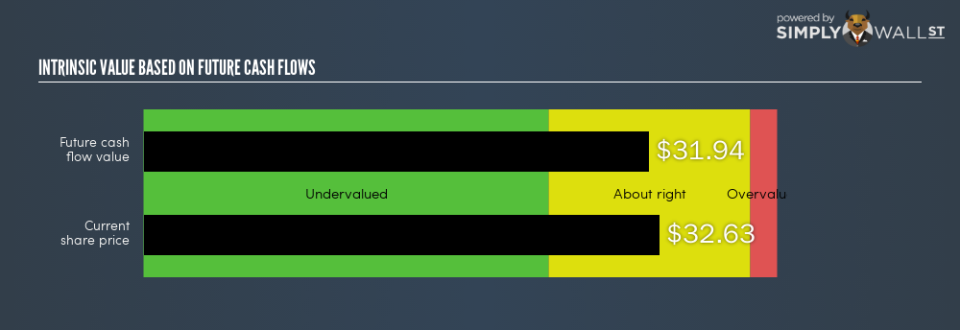Is Carolina Financial Corporation (NASDAQ:CARO) Expensive For A Reason? A Look At The Intrinsic Value

One of the most difficult industry to value is banking, given that they adhere to different rules compared to other companies. The tiered capital structure is common for banks to abide by, in order to ensure they maintain a sufficient level of cash for their customers. Emphasizing data points like book values, as well as the return and cost of equity, can be practical for assessing CARO’s intrinsic value. Today I will show you how to value CARO in a relatively accurate and straightforward way.
View our latest analysis for Carolina Financial
Why Excess Return Model?
Financial firms differ to other sector firms primarily because of the kind of regulation they face and their asset composition. Financial firms operating in United States face strict financial regulation. Moreover, banks generally don’t hold large amounts of tangible assets on their balance sheet. As traditional valuation models put weight on inputs such as capex and depreciation, which is less meaningful for finacial firms, the Excess Return model places importance on forecasting stable earnings and book values.
Deriving CARO’s True Value
The main assumption for Excess Returns is, the value of the company is how much money it can generate from its current level of equity capital, in excess of the cost of that capital. The returns above the cost of equity is known as excess returns:
Excess Return Per Share = (Stable Return On Equity – Cost Of Equity) (Book Value Of Equity Per Share)
= (0.12% – 11%) x $27.69 = $0.34
We use this value to calculate the terminal value of the company, which is how much we expect the company to continue to earn every year, forever. This is a common component of discounted cash flow models:
Terminal Value Per Share = Excess Return Per Share / (Cost of Equity – Expected Growth Rate)
= $0.34 / (11% – 2.9%) = $4.24
These factors are combined to calculate the true value of CARO’s stock:
Value Per Share = Book Value of Equity Per Share + Terminal Value Per Share
= $27.69 + $4.24 = $31.94
This results in an intrinsic value of $31.94. Relative to the present share price of US$32.63, CARO is trading in-line with its true value. Therefore, there’s a bit of a downside if you were to buy CARO today. Pricing is only one aspect when you’re looking at whether to buy or sell CARO. There are other important factors to keep in mind when assessing whether CARO is the right investment in your portfolio.
Next Steps:
For banks, there are three key aspects you should look at:
Financial health: Does it have a healthy balance sheet? Take a look at our free bank analysis with six simple checks on things like bad loans and customer deposits.
Future earnings: What does the market think of CARO going forward? Our analyst growth expectation chart helps visualize CARO’s growth potential over the upcoming years.
Dividends: Most people buy financial stocks for their healthy and stable dividends. Check out whether CARO is a dividend Rockstar with our historical and future dividend analysis.
For more details and sources, take a look at our full calculation on CARO here.
To help readers see past the short term volatility of the financial market, we aim to bring you a long-term focused research analysis purely driven by fundamental data. Note that our analysis does not factor in the latest price-sensitive company announcements.
The author is an independent contributor and at the time of publication had no position in the stocks mentioned. For errors that warrant correction please contact the editor at editorial-team@simplywallst.com.

